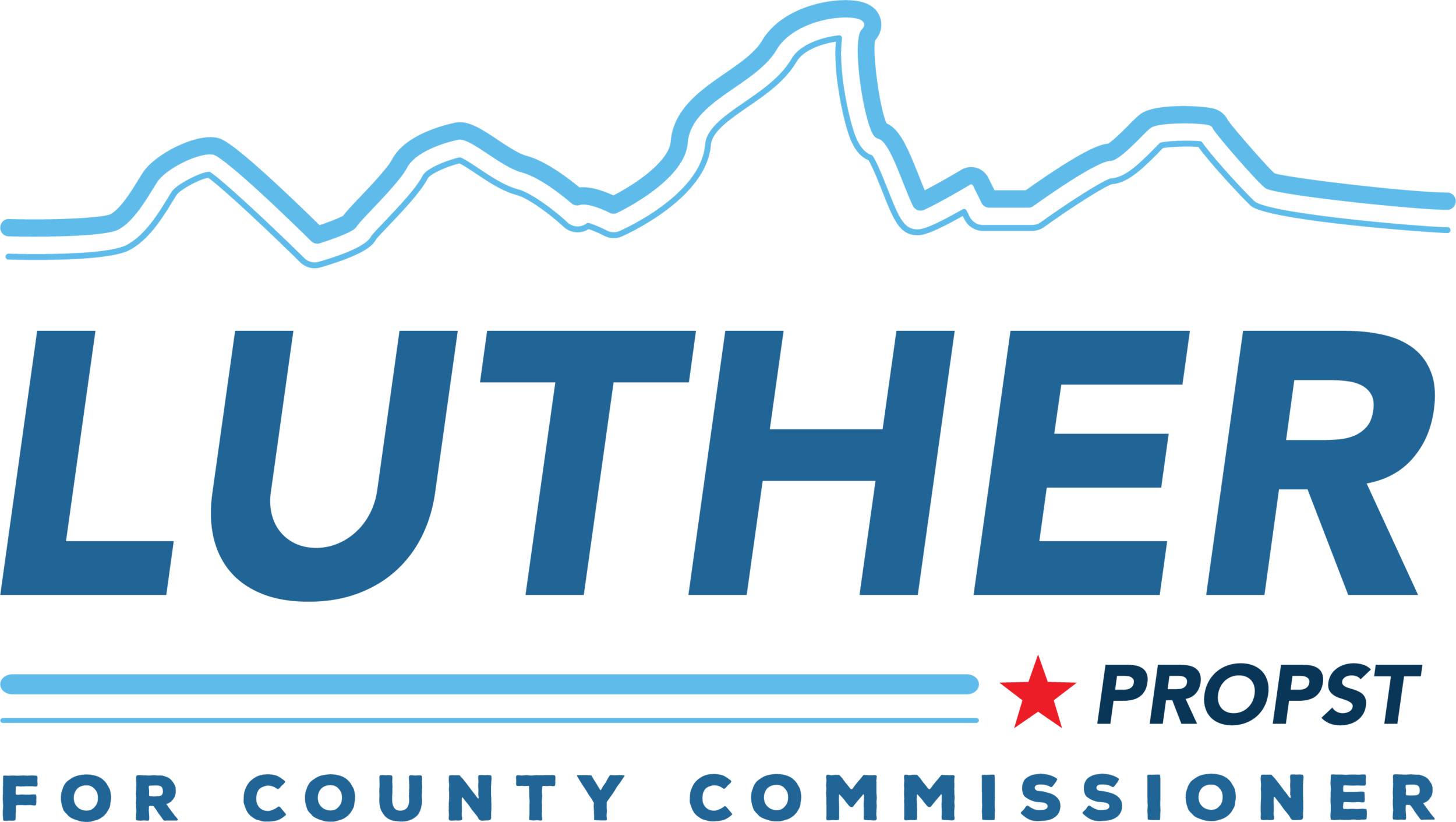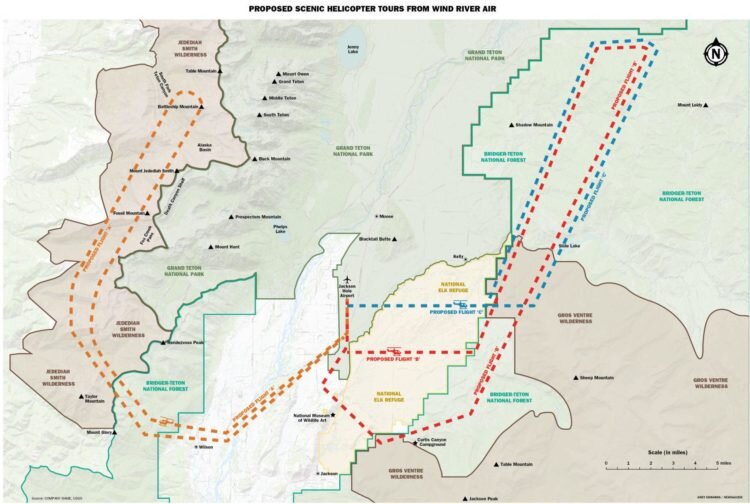The Commission's Resolution Calling for a Ban of Commercial Heli-tours
On April 20, the Teton County Commission unanimously approved a resolution calling for an end to the emerging commercial air tour industry in the Tetons. I strongly support this resolution; however, regulation of commercial helicopter tours is complicated, so I want to provide some background.
Counties do not have authority to regulate or manage aviation. For all practical purposes, the Federal Aviation Administration (FAA) has exclusive jurisdiction over civil aviation, including commercial air tours. From its inception, the FAA’s mission has been, in part, to promote aviation. Today, the FAA typically supports the commercial air tour industry with little if any regard for wildlife or local values.
Grand Teton National Park has objected to these flights, but it is unclear to me what the plan is for sorting out jurisdiction and authority. Commercial air tours are permitted to use the airport (which is sited with the national park), but not to otherwise conduct tours over the park. However, evidence seems to document that this is occurring.
I know from personal experience that commercial air tours can adversely affect the enjoyment of wild areas. I've had the good fortune to spend time in the western portion of the Grand Canyon, the north shore of Kauai, and the south shore of Molaka’i. Each of these remarkable landscapes is degraded by the nearly constant noise and intrusion of commercial helicopter tours.
There is also the issue of unneeded and substantial air pollution from the flights (including the residue of burning leaded fuel, of all things) and the risk of a crash and catastrophic, industrial-type wildfire in the deep backcountry (given the dangerous track record of commercial helicopter tours).
The county’s resolution does not end commercial air tours in the Tetons; however, it is a step in the right direction. Congress needs to pass legislation in order to ban commercial air tours in Grand Teton National Park and adjacent wildlands. This will require many folks in Jackson Hole to speak up.
The National Parks Conservation Association and Jackson Hole Conservation Alliance are leading the effort with their "Heli No!" campaign:
View and Join Their "Heli No!" Campaign
Please sign up, stay informed, and speak out.
Also, please email or call me at (520) 241-1510 if you have suggestions for helping to encourage the Wyoming delegation in Congress to support this legislation.
Northern South Park: A Modest Proposal
Influential urban designer, Daniel Burnham, is frequently quoted: "Make no little plans; they have no magic to stir men's blood and probably themselves will not be realized."
Burnham was a leading public figure in the late 1800s and his quote has motivated urban planners ever since.
On the other side of the spectrum, the classical Greek physician Hippocrates is widely known for the oath summarized: "First, do no harm."
While this applies to the medical professions, it’s also good advice for community planners.
There is a time for big, magical plans and a time for incremental plans that strive to do no harm and that adapt as circumstances change.
Given current realities, now is the time for our community to evaluate the merits of a phased, incremental approach to planning and zoning Northern South Park (NSP).
Almost all major land development happens in phases over many years. We should acknowledge that reality and ensure that one of the alternative scenarios for NSP is based on a phased approach to planning and especially zoning.
Specifically, one of the three scenarios being considered by the Northern South Park steering committee and consultants would largely be limited to about 40 to 50 acres of the portion of NSP that is most appropriate for development.
This scenario should defer zoning and limit planning for the balance of NSP. Forty to 50 acres is about the right size to test out a building neighborhood with diverse housing types and robust community amenities.
In short, we should run a pilot project before massive up-zoning. If this first phase works well, we can then assess lessons, adapt, and plan and zone for the next phase. If the pilot project does not work well (e.g. we get mansions and very little workforce or affordable housing), we will avoid massive acres of failed zoning that may still be on the zoning map for generations.
Given the realities, this approach is the best option for:
Workforce and Affordable Housing
Let’s test whether the community can secure an adequate amount and percentage of workforce and affordable housing. For example, by approving a first phase of 40 to 50 acres, we can avoid locking in zoning over hundreds of acres before we know whether the legislature will step into our local matters yet again to ban workforce or affordable housing.
Avoiding Traffic Congestion
Highway 89 South is a five-lane highway with excess traffic capacity, while High School Road is already congested at times. Let’s evaluate an alternative that mitigates even worse congestion on High School Road by concentrating development closest to Highway 89 and that considers building a neighborhood access road directly from Highway 89 rather than a high-speed bypass to South Park Loop Road.
This scenario may also place the first neighborhood closest to the Smith’s shopping center, enhancing the ability of residents to walk or bicycle in their daily lives.
Protecting Open Spaces
Let’s face it: We simply are not prepared to integrate future development with open-space protection and wildlife movement. For example, we don’t have a dedicated conservation funding source that would allow a serious conversation about protecting agricultural land in South Park and Jackson Hole.
We need time to determine how to best protect and restore riparian habitat along Flat Creek and protect portions of South Park for agriculture, wildlife movement, and green space.
Good Community Design
Let’s test whether we can design an exemplary walkable neighborhood with diverse densities – following examples of many other mountain towns. Maybe we can design a walkable, diverse neighborhood, along the lines of Bridger View in Bozeman, South Main in Buena Vista, or Three Springs in Durango, rather than another monument to exclusionary zoning and the single-occupancy motor vehicle.
I hope to see an analysis of a scenario along these lines – our best bet to "do no harm" to local workers, nearby neighborhoods, water quality, and wildlife.
Volunteer Board Openings
Teton County is seeking volunteers for the Historic Preservation Board, Library Board, and Board of Health. The deadline to apply is May 26. Each of these boards play a critical role in the wellbeing of our community. Please consider applying to serve on one of them.

